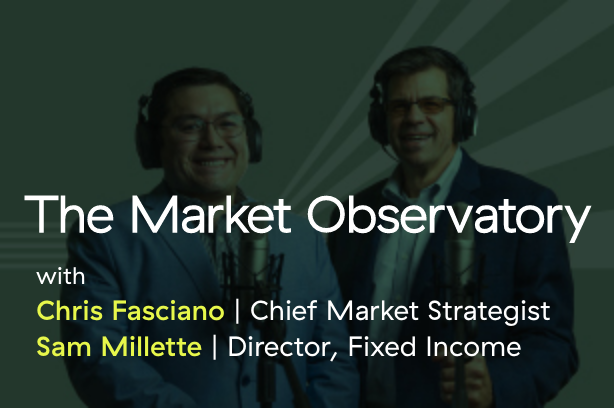My colleague Sam Millette, senior investment research analyst on Commonwealth’s Investment Management and Research team, has helped me put together this month’s Economic Risk Factor Update. Thanks for the assist, Sam!

May 12, 2020
My colleague Sam Millette, senior investment research analyst on Commonwealth’s Investment Management and Research team, has helped me put together this month’s Economic Risk Factor Update. Thanks for the assist, Sam!
May 8, 2020
Today, I'd like to take a look back over the past month to evaluate how far we’ve come in the coronavirus crisis. We’ve seen real progress in terms of the pandemic, with daily spread rates going from 15 percent at the start of April to less than 3 percent in recent days. Plus, the daily testing rate has doubled in that same time period, with the number of positive test results declining. We’re also making progress on the economic front. The news here isn’t necessarily good, but we could say it’s getting less bad. Weekly layoffs have started to trend down, federal stimulus programs have gone into effect, and a number of states have begun to reopen. The markets have taken note of these shifts and fully expect a V-shaped recovery.
The two keywords for last week’s update were “continued progress,” and those would work for this week as well. As this is the first update for May, however, let’s take a look at the progress over the past month, since the start of April. While weekly data is useful, the pandemic has now continued on for long enough that we have the data to establish a broader context—and that broader context is surprisingly positive.
It was the best of times, it was the worst of times. April was a Dickens of a month. But what lies ahead? Let’s take a closer look.
May 4, 2020
In April, U.S. markets were up by double digits. Still, the economic damage continued. Millions of jobs were lost, and businesses shut down. But we did see progress. The spread of the virus slowed, and testing increased. Plus, federal stimulus provided funds to individuals and businesses. The markets noted these improvements, bouncing back in April. In fact, the markets expect a full recovery in about a year. Are they right?
May 1, 2020
Today, I'd like to discuss where we are in the coronavirus crisis, including a look at the virus itself, the economy, and the market.
April 30, 2020
As we did last week, I’d like to provide an update on where we are in the coronavirus crisis. This week, the news has generally been good. The virus continues to come under control, with the growth rate slowing (although the case count has not declined as much). Some states are reopening their economies, which will give us valuable data and should help with employment. Finally, the markets have continued to rally but may have gotten a bit ahead of themselves. Let’s take a closer look.
April 29, 2020
With the Fed’s regular meeting concluding today, expectations are that the central bank will continue to provide whatever stimulus is necessary to keep the economy afloat. In conjunction with the federal government’s unprecedented multi-trillion dollar stimulus program, fears are rising that inflation is coming both fast and hard—and that we, as investors, need to plan now for this inevitability. I don’t believe it.
I appeared on Yahoo Finance’s The Final Round to discuss the impact of coronavirus on the market. Listen in to hear more.
April 24, 2020
Today, I'd like to discuss where we are in the coronavirus crisis and what that means for the economy and markets. We’ve seen significant progress in terms of the virus, with the daily case growth rate dropping below 4 percent for several days in a row. Further, the number of tests given has risen from about 150,000 to 300,000 per day. As we turn to the economy, the news is more of a mixed bag. Jobless claims are still very high, although this damage may have started to peak. Plus, with measures like the Paycheck Protection Program and stimulus checks, both individuals and businesses are getting some much-needed relief.

Episode 13
November 19, 2025
Episode 12
October 14, 2025
Episode 11
September 10, 2025
Episode 10
August 13, 2025
Episode 9
July 23, 2025
The information on this website is intended for informational/educational purposes only and should not be construed as investment advice, a solicitation, or a recommendation to buy or sell any security or investment product. Please contact your financial professional for more information specific to your situation.
Certain sections of this commentary contain forward-looking statements that are based on our reasonable expectations, estimates, projections, and assumptions. Forward-looking statements are not guarantees of future performance and involve certain risks and uncertainties, which are difficult to predict. Past performance is not indicative of future results. Diversification does not assure a profit or protect against loss in declining markets.
The S&P 500 Index is a broad-based measurement of changes in stock market conditions based on the average performance of 500 widely held common stocks. All indices are unmanaged and investors cannot invest directly in an index.
The MSCI EAFE (Europe, Australia, Far East) Index is a free float‐adjusted market capitalization index that is designed to measure the equity market performance of developed markets, excluding the U.S. and Canada. The MSCI EAFE Index consists of 21 developed market country indices.
One basis point (bp) is equal to 1/100th of 1 percent, or 0.01 percent.
The VIX (CBOE Volatility Index) measures the market’s expectation of 30-day volatility across a wide range of S&P 500 options.
The forward price-to-earnings (P/E) ratio divides the current share price of the index by its estimated future earnings.
Third-party links are provided to you as a courtesy. We make no representation as to the completeness or accuracy of information provided on these websites. Information on such sites, including third-party links contained within, should not be construed as an endorsement or adoption by Commonwealth of any kind. You should consult with a financial advisor regarding your specific situation.
Member FINRA, SIPC
Please review our Terms of Use.
Commonwealth Financial Network®